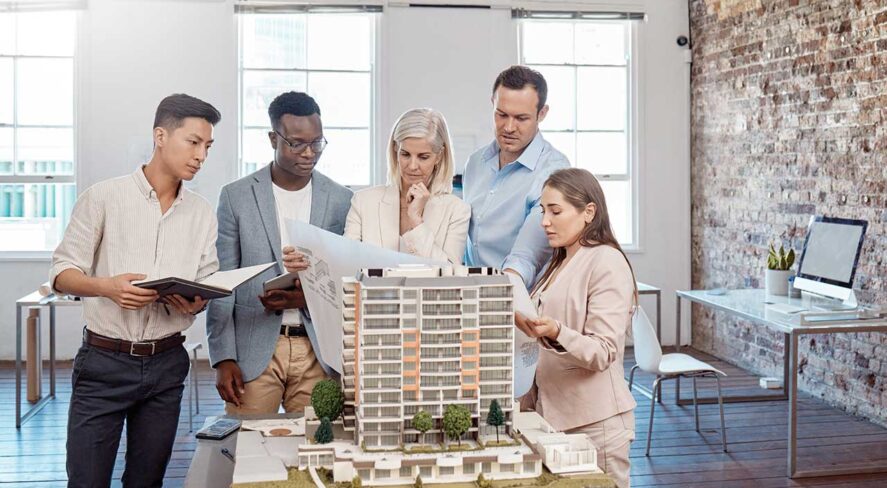Integration by Design

Security Should Fit Seamlessly Into Modern Buildings

As safety concerns rise in public and commercial spaces, a key question emerges: How do you secure a building without making everyone inside feel that they are in danger?
Traditional security measures like reinforced bars, electronic turnstiles and metal detectors can be jarring. They may provide physical protection, but they fail to offer emotional reassurance or peace of mind.
Security professionals and designers are now embracing a new philosophy: Security that is built into the environment, not bolted on afterward.
The Downside of Traditional Security Measures
Traditional physical security has often been designed around worst-case scenarios, with isolated products added as standalone solutions. But without thoughtful integration, these features can interrupt the purpose of the space, sending the wrong message to the people inside.
Walk into a school with heavy, visibly reinforced doors and you are reminded immediately of the threats they are meant to stop. In a healthcare environment, armored reception barriers can undermine the sense of calm and trust that is critical to care. In both cases, the design conveys the message that something could go wrong, and that can make people, understandably, feel unsafe.
In addition, overly visible or piecemeal solutions—like a camera at the entrance or a lone alarm panel—may give a false sense of security, especially when basic safety protocols like secure entry vestibules or door management procedures are missing.
True security starts with identifying what people are being protected from. In high-threat environments, where targeted, purposeful attacks with high-caliber weapons are a real possibility, more robust measures are needed. But in many commercial and public settings, the threat is often from individuals who act alone and without advanced tools. Security in these environments should be focused on delaying or deterring a threat.
Barriers that absorb an initial wave of violence can buy the seconds needed for people to react, respond or escape. This level of security lends itself to customized solutions that fit the space and are a part of the building.
Security That Belongs Rather Than Intrudes
Integrated security begins with a mindset shift from bolting on equipment after the fact to including protection in the earliest design conversations. When done well, security elements blend seamlessly into the surrounding materials and spatial flow.
While catalog products will often look out of place, custom ballistic doors, framing and windows can be manufactured to match the finishes, proportions and aesthetics of a given space. These systems are not hidden, but they are not in your face, either. They simply fit the space.
A school might have a vestibule designed with laminated wood finishes that look no different than any other architectural detail. A healthcare facility could have secure transaction windows built into its reception desk with no visible difference from the adjacent cabinetry. In historically significant buildings, bullet-resistant features can even be fabricated to preserve the appearance of original woodwork or metalwork.
People move through these spaces without a second thought, but those responsible for safety know the infrastructure is there and is effective.
Why Early Collaboration Matters
Achieving seamless integration between safety and aesthetics requires early collaboration with architects, contractors and security system manufacturers. This provides clarity about what is possible through a clear understanding of what the physical space can accommodate and how different components might affect traffic flow, code compliance and aesthetics. In addition, it helps to control costs. Changes made late in a project tend to be expensive. With advance planning, manufacturers can often offer creative, more affordable alternatives that still meet performance goals.
Early collaboration also ensures that the right level of protection is chosen. While there are established performance standards in the industry (e.g., UL, ASTM, NIJ), many building owners and design teams are not familiar with them. They may simply say, “We want to protect this building from a shooting.” By working closely with a trusted security partner, though, project teams can assess the threat profile, understand what level of defense is appropriate, and avoid overbuilding, which can drive up costs, add unnecessary weight and limit design options.
A Smarter Standard for Safer Spaces
The idea is not to trade aesthetics for safety, or vice versa. It is to marry the two through thoughtful planning and customization. When physical security is designed to blend into its environment, when people cannot see the difference, then they need not feel different about it.
Physical security can support the purpose of a space, rather than disrupt it. A secure vestibule does not need to feel cold. A ballistic transaction window does not need to look like a checkpoint. When security is customized to the architecture—using the same materials, proportions and finishes—it becomes a part of the environment, not a warning about it.
The key is understanding the actual threat profile, applying the right standard and designing a solution that works for both the people inside the space and the community it serves.
